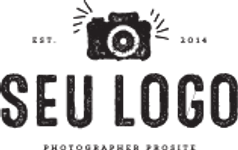According to the latest research report by Market Intelo, the global Sippy Cups market was valued at USD 6.9 billion in 2024 and is projected to reach USD 11.2 billion by 2032, growing at a CAGR of 5.8% during the forecast period (2025–2032). The increasing focus on baby health and hygiene, coupled with the rising demand for safe and convenient feeding solutions, is driving the growth of the sippy cups market across the globe.
Sippy cups, also known as training cups, are designed to help toddlers transition from bottles to regular cups while preventing spills. They have become an essential baby product among parents who prioritize convenience, safety, and durability.
Get Sample Report of Sippy Cups Market @ https://marketintelo.com/request-sample/42532
Market Dynamics
Rising Demand for Hygienic and BPA-Free Products
Parents today are more conscious of the materials used in baby feeding products. The shift towards BPA-free, non-toxic, and eco-friendly materials such as stainless steel, silicone, and polypropylene has significantly contributed to the market’s expansion. Manufacturers are focusing on sustainable designs that comply with global safety standards, further boosting consumer confidence and product adoption.
Innovation and Design Advancements Fuel Market Growth
The sippy cups market has witnessed rapid innovation in terms of design, functionality, and usability. Companies are launching products with features such as leak-proof lids, easy-grip handles, weighted straws, and temperature-sensitive materials. Additionally, the integration of ergonomic designs and attractive colors appeals to both parents and children, enhancing overall product demand.
Get Sample Report of Sippy Cups Market @ https://marketintelo.com/request-sample/42532
Market Segmentation Analysis
By Type
The market is categorized into hard spout cups, soft spout cups, straw cups, and 360° cups. Among these, 360° cups are gaining significant traction due to their spill-proof technology and resemblance to normal cups, which aid in better oral development.
By Material
Based on material, the sippy cups market is segmented into plastic, stainless steel, silicone, and glass. Plastic-based sippy cups currently dominate the market due to their lightweight and cost-effective properties. However, the silicone and stainless steel segments are expected to witness the fastest growth during the forecast period, driven by rising consumer preference for sustainable and long-lasting options.
By Age Group
The market is also segmented based on age groups such as 6–12 months, 12–24 months, and above 24 months. The 12–24 months category holds the largest market share, as this age range represents the key transition period when most toddlers move from bottles to sippy cups.
Read Full Research Study: https://marketintelo.com/report/sippy-cups-market
Regional Insights
North America
North America remains a leading region in the global sippy cups market, driven by high consumer awareness regarding baby safety standards, strong retail presence, and premium product availability. The United States dominates the region with a well-established baby products industry and strong demand for BPA-free materials.
Europe
Europe follows closely, with significant demand from countries such as Germany, the UK, and France. European parents are increasingly favoring eco-friendly and recyclable baby products, leading to a surge in the adoption of stainless steel and silicone-based sippy cups.
Asia-Pacific
Asia-Pacific is anticipated to be the fastest-growing market during the forecast period. Rapid urbanization, increasing disposable income, and a growing middle-class population in countries such as China, India, and Japan are propelling market expansion. The increasing penetration of e-commerce platforms has also made premium baby feeding products more accessible in the region.
Latin America and Middle East & Africa
Emerging economies in Latin America and the Middle East & Africa are gradually adopting premium baby care products, supported by improving distribution networks and the influence of global brands.
Competitive Landscape
The global sippy cups market is moderately fragmented, with key players focusing on product innovation, eco-friendly materials, and strategic collaborations. Leading companies in the market include:
- Philips Avent
- Munchkin Inc.
- NUK (Newell Brands)
- Tommee Tippee (Mayborn Group)
- Dr. Brown’s
- Playtex Baby
- Evenflo
- Nuby
- Oxo Tot
- Re-Play
These players are emphasizing sustainable manufacturing, leak-proof technology, and aesthetic product designs to strengthen their market positions. Additionally, partnerships with retailers and e-commerce platforms are expanding their reach among millennial parents.
Key Market Trends
- Sustainability Focus: Growing adoption of recyclable and biodegradable materials in sippy cup production.
- Customization and Personalization: Manufacturers are offering customizable designs and color options to cater to diverse consumer preferences.
- Smart Cups Innovation: Some companies are experimenting with “smart” sippy cups that can monitor hydration levels and temperature through connected mobile apps.
- E-commerce Growth: Online platforms are playing a pivotal role in expanding market accessibility, offering product variety, and facilitating direct-to-consumer sales.
Market Challenges
Despite the promising outlook, the market faces certain challenges, including counterfeit products, fluctuating raw material prices, and regulatory compliance concerns. However, ongoing advancements in product safety and quality certification are expected to mitigate these challenges over time.
Future Outlook
The sippy cups market is projected to maintain steady growth through 2032, driven by continuous innovation, expanding online sales, and growing parental awareness regarding child nutrition and safety. With increasing emphasis on environmentally responsible materials and ergonomic designs, manufacturers have significant opportunities to tap into new consumer segments globally.
Conclusion
In conclusion, the global sippy cups market is witnessing dynamic growth fueled by innovation, safety awareness, and sustainability trends. Manufacturers are increasingly investing in BPA-free and eco-friendly designs, while the rise of e-commerce continues to transform purchasing behavior. As consumer demand for quality and convenience intensifies, the industry is set to achieve significant expansion through 2032.
Related Report
- https://marketintelo.com/report/baggage-cart-tug-electrification-market
- https://marketintelo.com/report/airside-equipment-asset-tracking-market
- https://marketintelo.com/report/3d-radar-for-air-traffic-control-market
- https://marketintelo.com/report/airline-contact-center-solutions-market
- https://marketintelo.com/report/airline-sustainability-analytics-market
- https://marketintelo.com/report/helicopter-blade-de-icing-system-market
- https://marketintelo.com/report/hydrogen-fuel-pumps-for-aircraft-market
- https://marketintelo.com/report/graphene-composites-in-aerospace-market
- https://marketintelo.com/report/runway-safety-training-solutions-market
- https://marketintelo.com/report/live-animal-air-freight-services-market
- https://marketintelo.com/report/air-cargo-load-planning-software-market
- https://marketintelo.com/report/universal-hydrogen-retrofit-kits-market
- https://marketintelo.com/report/uam-passenger-processing-systems-market
- https://marketintelo.com/report/drone-gas-flare-stack-inspection-market
- https://marketintelo.com/report/counter-rotating-drone-propeller-market
- https://marketintelo.com/report/drone-obstacle-avoidance-sensors-market
- https://marketintelo.com/report/aircraft-asset-backed-securities-market
- https://marketintelo.com/report/active-flow-control-for-aircraft-market
- https://marketintelo.com/report/autonomous-flight-control-system-market
- https://marketintelo.com/report/sense-and-avoid-software-for-uas-market


